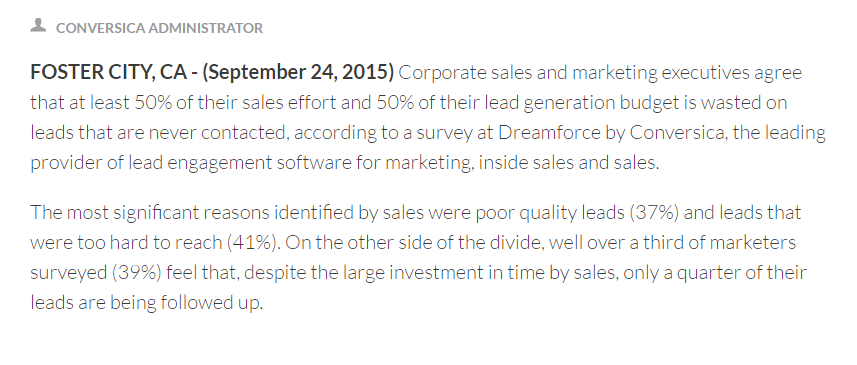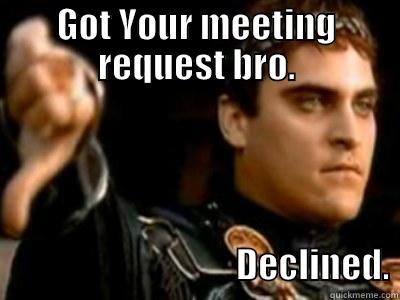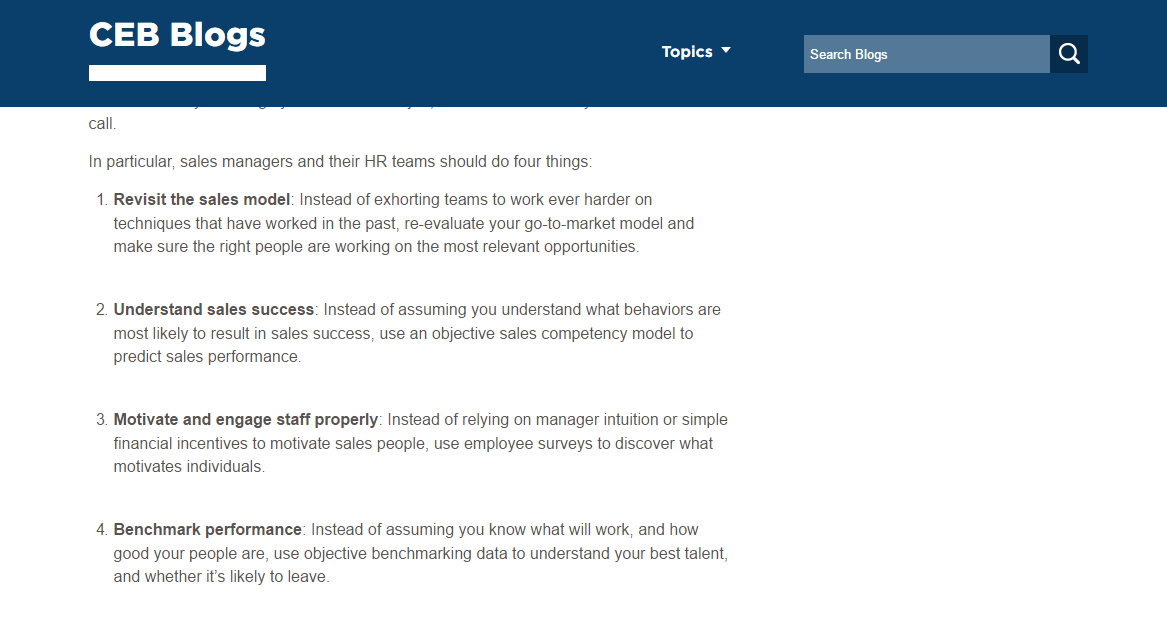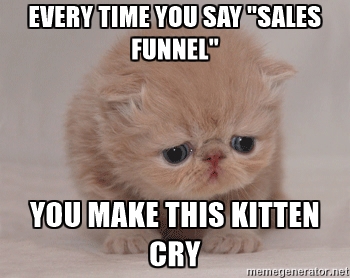
Being target motivated is one quality of a great sales manager, so what do you do when you notice your team is continually missing sales targets?
PANIC!
(Just kidding…well, kinda)
What you really need to do is take the time to re-evaluate your sales process, your coaching techniques and even the motivation levels of your team.
Did you know that according to a Bridge Group report, an average of 50% of sales reps are not making quota?
There are many reasons that may have nothing to do with your management style, but upon careful examination, I would be willing to bet you’ll notice areas that are in need of a little extra TLC.
Key Takeaways: The Best Reason for Not Achieving Sales Target
- Missing sales targets prompts a reevaluation of sales strategies, goal setting, and team motivation.
- Implement SMART goals, avoid rapid target increases, provide effective coaching, and ensure lead quality.
- Foster alignment between sales and marketing teams, tackle team disengagement, and refine follow-up processes for improved performance.
1.Your Goals Aren’t Firm
Like anything else in life, if your goals aren’t fully formed they will be impossible to attain.
Setting loose sales goals is like making a New Year’s resolution to lose weight. Without developing the specifics (how much, how will you do it etc.) you probably aren’t going to be setting yourself up for success.
Utilize the following acronym from FileBoard for setting attainable goals – SMART.
Specific
Measurable
Actionable
Realistic
Time-related
By utilizing this on a management level, you can set more realistic goals and your reps should also be utilizing SMART for their very own goal setting to hit those targets.
If you are missing your quarterly targets, for example, break your goal down into weeks of months.
This creates a more palatable goal that your team can monitor closely. It also allows you as the manager to notice things are slipping off the tracks before your quarterly goal is completely derailed.
You will also be better able to identify the cause of the sales slip up much easier when you are only looking at the stats for the week (or month).
2. You’re Raising Targets Too Quickly
Believe it or not, not at sales reps are looking to hit the goals you set for them. This probably leaves you scratching your head a bit, I mean…why would anyone NOT aim to hit their target?
The answer is actually pretty simple. You are raising sales targets too often.
Think about it from the reps point of view.
“If I hit the sales goal $X, this means I will be working overtime to hit the next goal.”
I’m not saying that you shouldn’t change your goals based on your sales, but what you shouldn’t do is jack them up really high when you hit the target.
Why?
Your salespeople are going to become discouraged. What good is celebrating the achievement of a goal when you now have the worry you aren’t even going to come close to achieving the next?
“Employees avoid exceeding targets if they know it will inflate future expectations. Too often, work targets are routine adjustments based simply on historical performance. Once employees recognize the predictable pattern, they may deliberately limit their efforts in a bid to temper future goals. This is known as the “ratchet effect” and it gets in the way of optimal firm performance.”
3. You’re Not Coaching
For those with long term management experience, it can be hard to take a step back and fully examine the shortcomings of your sales team. In fact, you might be a part of the problem and no one wants to face that troubling thought.
Sure, you are holding meetings and encouraging every chance that you can, but are you actually coaching?
Being a mentor and someone that your team not only respects (but doesn’t fear) is key to being in a great position to coach your sales team to greatness.
The Sales Executive Council found that sales reps who received 3 or more hours of coaching per month had 17% higher goal attainment than reps who received less than 2.
That’s a big difference!
From the Salesforce blog:
“A recent study by Zenger/Folkman showed that first line managers feel, to a greater extent than their executive counterparts, that it’s their responsibility to give orders and directives versus work collaboratively with their team members. Unfortunately, when leaders give orders they succeed in conditioning their people to wait for those orders, resulting in a decline in initiative and overall engagement — crappy.”
You are more than a captain of the ship, you need to get in their and help show your crew mates how to set and direct their sails. (see what I did there? sails/sales…moving on…)
One-on-ones are the best opportunity to coach your reps individually. Set up your meeting and stick to a plan. A sports coach wouldn’t show up without a playbook and plan of action, neither should you.
Sitting down and asking what your rep wants to talk about is a giant waste of time. As the coach, you lead the discussion. This doesn’t mean that you can’t ask questions beforehand. Touch base with the rep to find out where they feel they could improve.
For example, if you know that follow-up is where this particular employee is slipping up in the sales funnel, make that the subject of the one-on-one.
Ask questions and really listen to the answers, you will learn more about the issues at hand and how you can work to correct them.
Lastly, review data with your employees and see where things may have gotten off track.
4. Your Lead Generation is Poor
How strong are your leads?
As you can see, valuable time and effort are wasted on leads that are never going to convert into sales.
Do you have a clear definition of what a “good lead” is?
Surprisingly, this is one of the leading reasons poor leads are acquired…you and your team don’t know exactly what they are looking for and chase whatever comes their way.
Top reasons you are chasing bad leads:
- Your content isn’t aimed at your ideal leads
- You aren’t qualifying your leads
- You’re placing your content in front of the wrong audience
5. Your Sales and Marketing Teams are Disconnected
When your sales and marketing departments aren’t aligning their efforts, your sales are without a doubt going to suffer.
Sales and marketing are a bit like cats and dogs.
A recent study actually found that 87 percent of the terms sales and marketing use to describe each other are negative.
Consider this, your clients are connected through so many platforms these days that if your marketing and sales team aren’t reaching out with similar goals in mind and similar branding, things aren’t going to run smoothly.
That’s a fact.
So how can you improve this?
If you don’t already, start having meetings with both teams. Allow them to talk about issues (maybe marketing is passing down too many unqualified leads) and come up with solutions.
When your two teams begin to interact, they will no longer be a faceless person to place blame on, they will be actual valuable players that can listen to and take advice.
6. Your Team is Suffering From Disengagement
Disengagement isn’t only an issue that crosses different departments, it happens all too often within the team.
Getting your reps engaged again would be easy if you could just motivate with money…but when salespeople aren’t satisfied, money often may cover the wound for a moment, but utlimately with disengaged salespeople on your team, you will be missing your target again and again.
7. Follow-Up is Falling Short
Want to know how poor follow-up is impacting your sales?
Take a look at these statistics regarding follow up from Kaleidico.
- 2% of sales are made on the first contact
- 3% of sales are made on the second contact
- 5% of sales are made on the third contact
- 10% of sales are made on the fourth contact
- 80% of sales are made on the fifth to twelfth contact
Tips for improving follow-up from Entrepreneur –
- Put your leads into one of three categories – ready to buy leads (hot), almost ready (warm) and leads that aren’t likely to be ready ever (cold). This is often referred to as “cherry picking leads.” Of course your sales team will want to focus on the low hanging fruit, but make sure that they are also working on turning those warm leads into hot ones.
- Perfect your timing – Follow-up success or failure is largely due, in part, to timing. Be sure your team is touching base with warm and even some cold leads, often. Implement your own hard and fast system for follow-up times and make sure your entire team is on board.
- Make sure your salespeople are educating – Following up with leads isn’t worthwhile if you are simply checking in. Make sure your reps are actively educating leads with each and every interaction.
8. Your Metric Tracking Isn’t up to Par
If you aren’t tracking the success of your campaigns or the number of connections made each day, how are you going to identify where you need to improve when you keep missing your sales target?
Take a look at your current metrics and tracking system and notice where you can be more efficient.
9. You Have a Weak Spot in Your Sales Funnel
If you are missing targets, chance are there is a weak spot in your sales funnel.
As mentioned above, perhaps it’s your follow-up or maybe your leads are poor, but diving in deep to see exactly where you are losing potential customers is key to getting a successful rehabilitation plan in place.
Once again, the importance of metrics reveals itself!
Here are 5 metrics from Hubspot that will help you pinpoint your sales funnel issues.
- Traffic Sourcing & Engagement Stats from Content
- Call-to-Action Effectiveness
- Landing Pages Submission Rates
- Email Click Rates
- Measuring Email Marketing Automation Performance
10. Your Sales Cycle Has Lengthened
If you are noticing a sudden drop off in sales target achievement, take a look at your sales cycle. Has is recently become longer?
The longer it takes to get from prospecting to purchasing, the easier it is for customers to fall through the cracks.
Even if your sales cycle hasn’t changed, tightening it up a bit may help increase your conversions and get you one step closer to hitting your sales target.
So how can you shorten in?
Check out these 4 tips from Pardot:
- Objective lead qualification – this allows you to separate hot, warm and cold leads.
- Lead nurturing – by nurturing your leads. salespeople can more accurately gauge what it is that the leads want and how they want the information delivered.
- Detailed prospect tracking – By tracking where your leads are in the funnel, there’s no real mystery.
- Speed up your follow-up – Don’t let warm and hot leads turn cold by keeping them hanging in the sales funnel for too long. When you increase follow-up time, you are effectively shortening up the cycle.
With all this in mind, delve deeper into the effectiveness of your own management style and the sales process itself and soon you will identify the reasons you are missing your sales targets. Once these issues are identified, you are ready to make changes, move forward and once again begin meeting your goals.
Read more:









